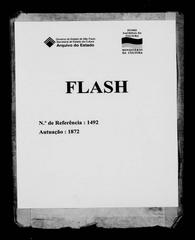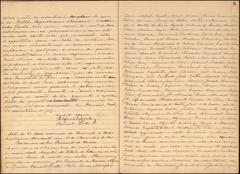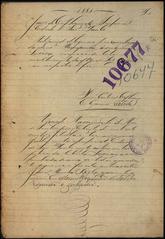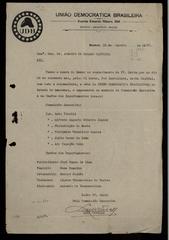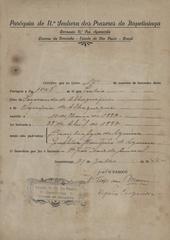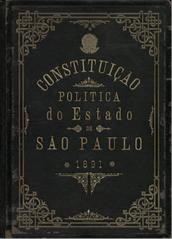
Arquivo Público do Estado de São Paulo: Complete Guide to Visiting, Research, and São Paulo Historical Sites
Date: 14/06/2025
Introduction
The Arquivo Público do Estado de São Paulo (APESP) is one of Brazil’s leading archival institutions, preserving over 25 million documents that chronicle the social, political, and cultural evolution of São Paulo and Brazil. Established in the late 19th century, APESP is a vital resource for researchers, genealogists, historians, and anyone interested in the state’s heritage. This detailed guide covers everything you need to know about APESP—its history, visitor information, collections, digital access, and recommendations for making the most of your visit to São Paulo’s top historical archives (Migramundo; Wikipedia; APESP ICA-AtoM Portal).
Table of Contents
- Historical Overview and Institutional Evolution
- Significance in São Paulo’s Historical and Cultural Landscape
- Collections and Research Services
- Visiting Hours, Admission, and Accessibility
- Digital Access and Online Resources
- Guided Tours, Special Events, and Educational Programs
- Travel Tips and Nearby Attractions
- Handling, Conservation, and Reproduction Policies
- Frequently Asked Questions (FAQ)
- Key Takeaways and Visitor Recommendations
- Sources
1. Historical Overview and Institutional Evolution
Origins and Foundational Role
Founded in 1892 during São Paulo’s era of rapid modernization, APESP centralized the preservation of government records, immigration documents, judicial files, and private collections. These archives are instrumental for historical transparency, legal processes, and genealogical research (Britannica).
Institutional Expansion & Modernization
Throughout the 20th century, APESP expanded its holdings, notably documenting the influx of immigrants at entry points like Porto de Santos and the Hospedaria de Imigrantes. Modernization efforts included the digitization of immigrant registration lists and the issuance of digital certificates required for nationality and legal documentation (Migramundo).
Digital Transformation
In recent years, APESP has prioritized digital access by making nearly 53,000 immigrant registration lists available online and offering advanced search capabilities through platforms like ICA-AtoM (APESP ICA-AtoM Portal).
2. Significance in São Paulo’s Historical and Cultural Landscape
Guardian of Immigration and Social History
APESP holds vital records for those tracing family roots or studying the development of São Paulo’s multicultural identity. The Certidão de Desembarque (Landing Certificate) remains an essential document for descendants of immigrants (Migramundo).
Support for Academic and Legal Research
The archive’s collections support academic studies, legal claims, and public inquiries into São Paulo’s past, making it a cornerstone for transparency and civic engagement (Springer).
Public Engagement and Educational Outreach
APESP fosters public awareness through exhibitions, workshops, and partnerships with schools and cultural institutions. Recognized by UNESCO’s Memory of the World Programme, it plays a vital role in safeguarding documentary heritage (São Paulo Antiga).
3. Collections and Research Services
Overview of Collections
- Textual Documents: Government records, administrative reports, legal proceedings, and cadastral files from colonial times to the present.
- Cartographic and Iconographic Materials: Maps, urban plans, photographs, engravings, and illustrations reflecting São Paulo’s development.
- Hemeroteca: Newspapers, magazines, and periodicals, many digitized for online access.
- Special Collections: Rare books, personal papers of notable figures, and thematic archives on immigration, public health, and education.
Research Support
Professional staff assist visitors with catalog navigation, document retrieval, and research methodologies. Most services are free, but some reproduction services may incur fees.
4. Visiting Hours, Admission, and Accessibility
Visiting Hours
- Monday to Friday: 9:00 AM – 5:00 PM (document requests accepted until 3:30 PM)
- Closed: Weekends and public holidays
- Admission: Free
Appointment and Booking
All visits require advance booking via email, providing your full name, valid photo ID, research topic, and a list of up to 16 documents or collections to consult. Bookings help ensure availability and personalized assistance.
Accessibility
- Wheelchair accessible facilities
- Assistance available for visitors with disabilities—contact APESP in advance for special arrangements
5. Digital Access and Online Resources
APESP’s digital transformation has made vast portions of its collections accessible remotely:
Many commonly requested documents—like immigration records and historical photographs—are available for immediate download.
6. Guided Tours, Special Events, and Educational Programs
- Guided Tours: Available by appointment, highlighting the archive’s history and collections.
- Educational Programs: Workshops and monitored visits for schools and groups.
- Special Events: APESP regularly hosts exhibitions, lectures, and cultural activities—check the official website or social media for updates.
7. Travel Tips and Nearby Attractions
Getting There
APESP is centrally located in São Paulo, easily accessible by metro, bus, or car. Parking is available nearby.
Nearby Attractions
- Museu do Ipiranga
- São Paulo Cathedral
- Pinacoteca do Estado
- São Paulo Museum of Art (MASP)
- Ibirapuera Park
These sites can be combined for an enriching cultural itinerary.
8. Handling, Conservation, and Reproduction Policies
- Gloves are required for handling original documents.
- Some originals may be restricted to preserve their condition; digitized versions are preferred for consultation.
- Self-photography is permitted under supervision, with restrictions to protect materials.
- Non-commercial digital reproduction is allowed with proper citation and responsibility agreements; commercial use requires authorization.
9. Frequently Asked Questions (FAQ)
Q: What are the APESP visiting hours?
A: Monday to Friday, 9:00 AM to 5:00 PM; closed on weekends and holidays.
Q: Is admission free?
A: Yes, access is free; reproduction services may incur fees.
Q: How do I book a visit?
A: Email APESP with your name, ID, research topic, and list of documents to consult.
Q: Is the archive accessible for people with disabilities?
A: Yes; contact APESP in advance for accommodations.
Q: Can I take photographs of documents?
A: Yes, with permission and following conservation policies.
Q: Does APESP offer digital collections?
A: Yes, via their digital platforms.
Q: Are guided tours available?
A: Yes, by appointment.
Q: What should I bring for my visit?
A: Valid photo ID and a list of documents you wish to consult.
10. Key Takeaways and Visitor Recommendations
- Book appointments in advance to guarantee access and tailored research support.
- Familiarize yourself with digital platforms—many resources are available online.
- Engage with guided tours and special events to enhance your experience.
- Combine your visit with nearby historical landmarks for a deeper cultural immersion.
- Follow APESP on social media and download the Audiala app for updates on exhibitions and events.
The Arquivo Público do Estado de São Paulo is more than a repository of documents—it is a dynamic institution dedicated to preserving, sharing, and celebrating the history of São Paulo and Brazil. Whether you are researching ancestry, conducting academic work, or simply exploring São Paulo’s cultural heritage, APESP is an essential destination.
11. Sources
- Arquivo Público do Estado de São Paulo (APESP): Visiting Hours, Tickets, and Historical Significance
- Arquivo Público do Estado de São Paulo: Visiting Hours, Tickets, and Cultural Significance
- Exploring the Arquivo Público do Estado de São Paulo: Visiting Hours, Collections & Digital Access

